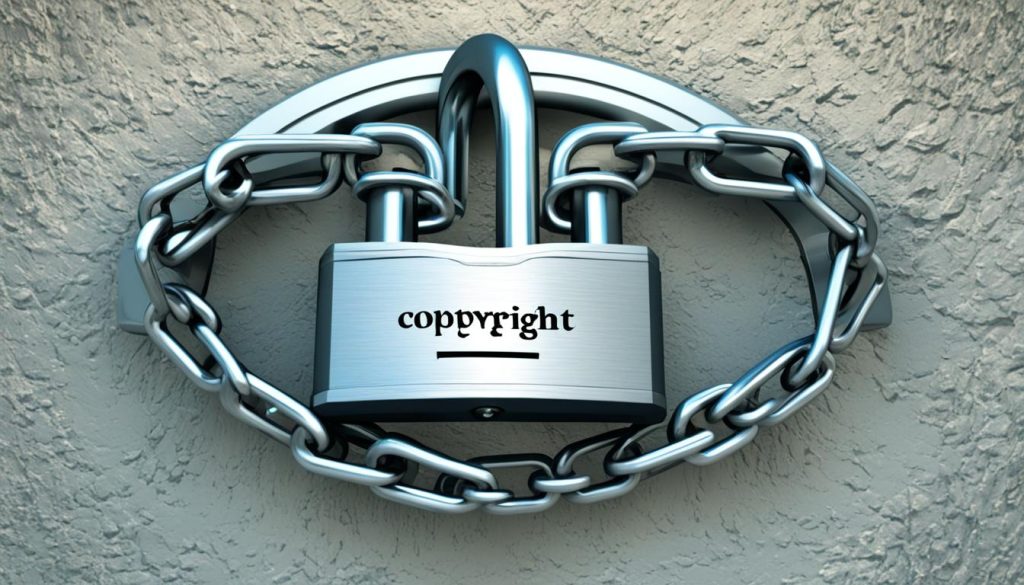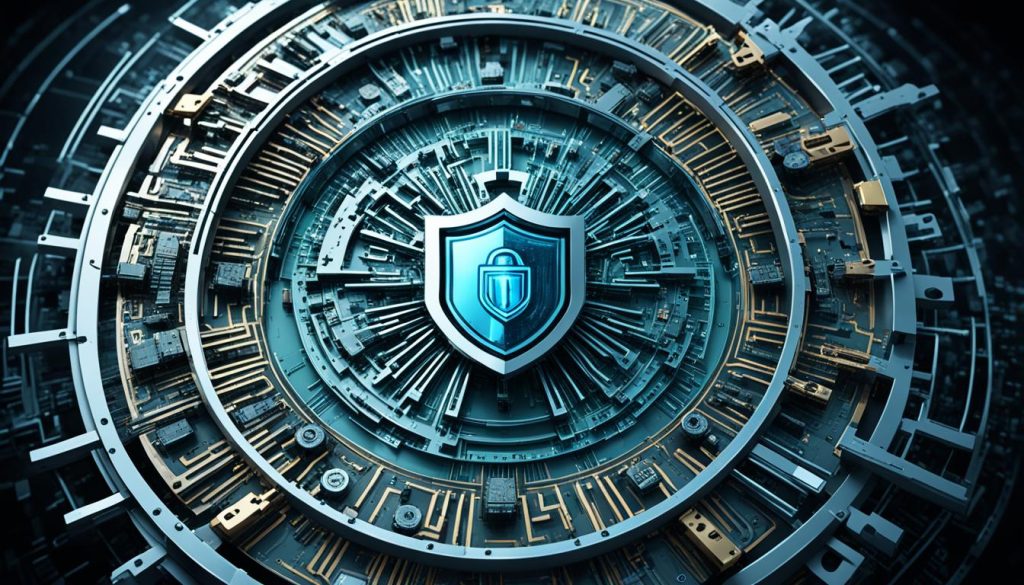- 1. Understanding Intellectual Property
- 2. What is Copyright?
- 3. The Benefits of Registering Your Copyright
- 4. The Importance of Content Usage Rights in Creative Works
- 5. What are Trademarks, and How Can They Protect Your Creative Works?
- 6. Protecting Your Ideas Legally
- 7. Digital Rights Management (DRM) Tools
- 8. Best Practices for Managing Your Intellectual Property
- 9. Unlocking the Value of Intellectual Property
- 10. The Role of Open Innovation
- 11. Monitoring and Enforcing Your Rights
- 12. Conclusion
- 13. FAQ
- 13.1 What is the current value of the creator economy and its projected growth?
- 13.2 What is intellectual property (IP), and what does it include?
- 13.3 What is copyright, and how does it protect creative works?
- 13.4 What are the benefits of registering your copyright?
- 13.5 What are usage rights, and why are they important for protecting creative works?
- 13.6 What are the different types of licensing agreements, and how do they affect the use of copyrighted material?
- 13.7 How do trademarks provide additional protection for creative works?
- 13.8 Why is maintaining accurate records important for protecting your creative work?
- 13.9 How can digital rights management (DRM) technology help protect your digital content?
- 13.10 What are the best practices for managing your intellectual property effectively?
- 14. Source Links
The creator economy is currently valued at $250 billion and is projected to grow to over $480 billion by 2027. It is crucial for creative professionals and entrepreneurs to understand how usage rights can affect their work. Copyright laws shield creative works, and formal registration bolsters this protection, granting legal rights and proof of intellectual property ownership. Trademarks and usage rights offer additional security, and license agreements dictate the terms of use for others, maintaining control over creative content. Effective intellectual property rights management requires diligent record-keeping and regular updates to ensure ongoing control and protection as a copyright holder.
Key Takeaways
- Understand the importance of copyright law in protecting your creative works and ideas.
- Learn about the benefits of formally registering your copyright to strengthen your legal rights.
- Discover how trademarks and usage rights can provide additional layers of protection for your intellectual property.
- Recognize the value of diligent record-keeping and regular updates to maintain control over your creative content.
- Consider seeking legal counsel to navigate the complexities of intellectual property rights management.
Understanding Intellectual Property
Intellectual property (IP) is a crucial aspect of modern business and creativity. It refers to the creative works, inventions, and ideas that are legally protected from unauthorized use or reproduction. IP laws grant exclusive rights to those who create something original, safeguarding them from plagiarism, counterfeiting, and other forms of copyright infringement.
What is Intellectual Property?
Intellectual property encompasses a wide range of creative endeavors, including literary works, patents, trademarks, copyrights, secret formulas or processes, and even trade secrets protected by non-disclosure agreements. These intangible assets are the result of human ingenuity and innovation, and they deserve robust legal protection to ensure that creators and innovators are rewarded for their contributions.
Types of Intellectual Property
The main categories of intellectual property include:
- Patents – Protecting inventions and discoveries
- Trademarks – Identifying and distinguishing products and services
- Copyrights – Safeguarding original creative works
- Trade Secrets – Protecting confidential business information
- Non-Disclosure Agreements – Contractually restricting the disclosure of sensitive information
Understanding the nuances of these various forms of intellectual property rights is crucial for effectively protecting your creative assets and maintaining a competitive edge in your industry.
What is Copyright?
Copyright is a legal form of protection that grants exclusive rights to content creators. It protects the creators’ original works from being used without permission. Copyright holders have the exclusive rights to reproduce, distribute, and perform their works publicly — whether it’s for literary, musical, commercial purposes, or artistic endeavors. Copyright laws are set up to safeguard the rights of authors, inventors, artists, musicians, and other creators, preventing others from using their creative works without permission.
Copyright Laws and How They Protect Your Creative Works
These copyright laws ensure that you, as the creator, maintain control over how your work is used. They grant you the exclusive right to reproduce, distribute, and publicly perform your original creations, whether they’re written, visual, or auditory works. This protection helps you prevent others from unlawfully reproducing, distributing, or publicly performing your work without your consent.
| Key Copyright Protections | Description |
|---|---|
| Reproduction Rights | The exclusive right to make copies of your work in any format, including digital and physical. |
| Distribution Rights | The exclusive right to sell, rent, lease, or lend copies of your work to the public. |
| Public Performance Rights | The exclusive right to perform your work publicly, such as in a concert, play, or broadcast. |
By understanding these copyright laws and the protections they offer, you can safeguard your creative works and maintain control over how they are used, reproduced, and shared with the public.

The Benefits of Registering Your Copyright
Registering your copyright offers several valuable benefits that can help you protect your creative works. One of the primary advantages is the ability to make a legal claim and become eligible for statutory damages in the event of copyright infringement. By registering your work, you establish a clear legal foundation for enforcing your exclusive rights over the content.
Registration also serves as proof of ownership, providing you with a Certificate of Registration from the Copyright Office. This official document can be a powerful tool when licensing or transferring the copyright to your work, helping to clearly establish your rights and prevent unauthorized use.
The Process of Registering Your Copyright
The process of registering your copyright involves a few straightforward steps. First, you’ll need to obtain a copyright application form. This form will ask you to provide details about your creative work, such as the title, author, date of creation, and a copy of the work itself. Once you’ve completed the form, you can submit it, along with the required payment, to the Copyright Office. Upon successful registration, you’ll receive your Certificate of Registration, solidifying your legal foundation for your intellectual property.
| Benefits of Copyright Registration | Key Considerations |
|---|---|
|
|
The Importance of Content Usage Rights in Creative Works
As a creative professional, understanding the concept of usage rights is crucial to protecting your intellectual property and maintaining control over your work. Usage rights are the permissions granted to use copyrighted material in a specific way for a predetermined period, ensuring that you, the creator, retain authority over your creations and can enforce your rights when necessary.
Understanding Licensing Agreements
At the heart of usage rights are licensing agreements – legal contracts that define the terms of use for your copyrighted material. These agreements specify who can use your work, how it can be used, and for how long, as well as any royalties or fees that must be paid if the work is used commercially. Carefully negotiating and drafting these agreements is essential to safeguarding your intellectual property and ensuring that you are fairly compensated for the use of your creations.
Types of Licensing: Exclusive vs. Non-Exclusive
When it comes to licensing, there are two primary options: exclusive licensing and non-exclusive licensing. Exclusive licensing grants you, the creator, complete control over how your work is used, and prevents it from being used by anyone else without your consent. In contrast, non-exclusive licensing allows users to access or use your copyrighted material without seeking your explicit permission, but they must still comply with the terms of the license and applicable copyright laws.
Choosing the right type of licensing agreement for your creative works is a strategic decision that can have a significant impact on your ability to maintain control, generate revenue, and protect your intellectual property. By understanding the nuances of usage rights and licensing, you can take proactive steps to safeguard your work and ensure that it is used in accordance with your wishes.
What are Trademarks, and How Can They Protect Your Creative Works?
Trademarks provide additional protection for your creative works, particularly when you need to distinguish your product or service from others in the marketplace. A trademark identifies your goods or services and differentiates them from others through words, phrases, symbols, or a combination of these elements.
Trademarks are not a form of copyright protection, but rather part of intellectual property law that allows you, as a creator, to identify your work in the marketplace and stop competitors from using similar brand names or product identification that could confuse consumers. Trademarks can be denoted by the ™ or ® symbol, depending on whether the trademark is unregistered or registered.
Registered trademarks offer stronger legal protection and can help you create a distinct identity for your business, products, and services, aiding in market differentiation and brand recognition. By securing a registered trademark, you can further safeguard your creative works and ensure that your unique brand names and product identification are protected from unauthorized use by competitors.
| Trademark Type | Legal Protection | Identification Symbols |
|---|---|---|
| Unregistered Trademark | Limited legal protection, primarily based on common law | ™ |
| Registered Trademark | Stronger legal protection, granted by the government | ® |

Protecting Your Ideas Legally
Maintaining accurate records is vital for protecting your creative work. Creating an intellectual property inventory of all your work over time, including titles, descriptions, dates created, and category information, can help you stay on top of copyright law, enforce usage rights, and track any changes that may affect the ownership or use of your work. Saving backups of each piece and written permission from any co-authors or collaborators can also help prove ownership if needed. Regularly updating your knowledge of IP laws is essential to ensure that your work remains legally protected.
Digital Rights Management (DRM) Tools
In the digital age, protecting your creative works from theft, unauthorized sharing, or alteration is crucial. Digital Rights Management (DRM) technology offers a powerful solution to safeguard your media assets and ensure your content is used according to your terms and conditions.
DRM tools provide robust media asset protection by implementing various security measures, such as encryption, access controls, and usage restrictions. These advanced features help prevent content theft prevention, making it more difficult for your digital content to be accessed, duplicated, or distributed without your consent.
By leveraging DRM, you can maintain control over your creative works, ensuring they are used in alignment with your licensing agreements and intellectual property rights. This technology acts as a digital gatekeeper, upholding the integrity of your content and preserving the value of your hard-earned intellectual property.
Integrating DRM into your content distribution strategy is a proactive step towards fortifying your digital assets against unauthorized use or exploitation. Embrace these cutting-edge tools to safeguard your creative works and unlock the full potential of your intellectual property in the digital landscape.

Best Practices for Managing Your Intellectual Property
Effective management of your intellectual property (IP) requires diligence and a commitment to following industry best practices. By staying up to date on changes in IP laws and collaborating with legal professionals, you can ensure ongoing protection and control over your valuable creations.
Regularly Updating Your Knowledge of IP Laws
Intellectual property laws are constantly evolving, and it’s crucial that you stay informed about the latest updates and changes. Regularly review relevant IP law updates to ensure your understanding remains current. This will help you identify any potential risks or opportunities related to your intellectual property and take proactive measures to safeguard your rights.
Collaborating with Legal Professionals
While understanding the basics of IP law is important, navigating the complexities of licensing agreements, enforcement strategies, and other legal matters can be challenging. Collaborating with experienced legal professionals can provide you with invaluable guidance and support. These experts can help you develop robust IP management practices, ensure your work is properly protected, and assist you in enforcing your rights when necessary.

Unlocking the Value of Intellectual Property
Unlocking the full potential of your IP value creation requires a strategic approach. Start by IP identification and protecting your intellectual property through appropriate legal measures such as patents, trademarks, and copyrights. Develop a comprehensive IP strategy that aligns with your overall business objectives, addressing both short-term and long-term goals.
Leveraging Licensing and Partnerships
Leverage licensing and partnerships to monetize your IP assets while maintaining control over their use and quality. Explore opportunities for open innovation and collaboration with external partners to accelerate innovation and create new revenue generation and market expansion opportunities.
| IP Monetization Strategies | Benefits |
|---|---|
| Licensing | Generates revenue through royalties or fees while retaining IP ownership and control |
| Partnerships | Enables access to new markets, technologies, and resources to drive innovation and growth |
| Open Innovation | Fosters collaboration and knowledge sharing to unlock new value from IP assets |
By implementing these strategies, you can unlock the true value of your intellectual property and leverage it to drive innovation, generate revenue, and expand your market presence.
The Role of Open Innovation
In the era of open innovation, collaboration and knowledge sharing can be powerful strategies to unlock the value of your intellectual property. Look beyond the boundaries of your organization and explore opportunities for collaboration with external partners, such as research institutions, startups, or industry experts. By licensing or sharing your IP with trusted collaborators, you can tap into their knowledge and capabilities, accelerating innovation and potentially creating new revenue streams.
Open innovation encourages companies to engage with a diverse range of partners, leveraging their specialized expertise and resources to drive breakthrough innovations. By fostering an ecosystem of external partnerships and knowledge sharing, you can access new ideas, technologies, and market insights that may have been beyond your organization’s reach. This collaborative approach can help you stay ahead of the curve, respond to changing customer needs, and create unique value propositions.
When embracing open innovation, it’s crucial to establish clear guidelines and procedures for IP management. Carefully evaluate potential partners, ensure confidentiality, and negotiate favorable licensing agreements that protect your intellectual property rights while enabling mutually beneficial collaboration. By striking the right balance between open innovation and IP protection, you can unlock new avenues for growth and innovation.
| Benefits of Open Innovation | Strategies for Effective Collaboration |
|---|---|
|
|
“Open innovation allows us to leverage the collective expertise and resources of our partners, driving breakthrough ideas and accelerating our path to market.”
– John Smith, Chief Innovation Officer, Acme Corporation
By embracing the principles of open innovation, you can unlock the full potential of your intellectual property and position your organization for long-term success in today’s dynamic, knowledge-driven economy.
Monitoring and Enforcing Your Rights
Protecting the value of your intellectual property requires diligent IP monitoring and IP enforcement. Stay vigilant for any infringements on your IP rights and take swift legal action when necessary. Regularly monitor the market for unauthorized use or imitation of your IP and engage legal counsel to help you navigate IP-related disputes and enforce your rights effectively.
By actively safeguarding your IP, you can maintain the value and integrity of your assets and send a strong message that unauthorized use will not be tolerated. Maintaining market vigilance is crucial to ensuring your creative works and innovations remain protected from infringement, allowing you to fully capitalize on the value of your intellectual property.
| Monitoring and Enforcement Strategies | Benefits |
|---|---|
| Regular market scans for unauthorized use | Quickly identify and address IP infringement |
| Collaboration with legal professionals | Receive expert guidance on IP rights enforcement |
| Proactive enforcement of exclusive rights | Maintain the value and integrity of your IP assets |
| Sending cease and desist letters | Deter future unauthorized use of your IP |
By implementing a comprehensive IP monitoring and IP enforcement strategy, you can safeguard your intellectual property, protect your competitive advantage, and ensure that your creative works and innovations are used in accordance with your intended terms and conditions.
Conclusion
Intellectual property represents a valuable and often untapped resource for organizations. By unlocking its true potential through a proactive approach, you can drive innovation, generate revenue, build competitiveness, and secure long-term business success in today’s dynamic, knowledge-driven economy.
The key lies in implementing comprehensive strategies that encompass the identification, protection, and strategic management of your intellectual property. Collaborating with external partners and vigilantly enforcing your rights are also essential steps in maximizing the value of your intellectual property protection.
As you navigate the evolving landscape of intellectual property rights, remember that your creative works, innovations, and brand identity are the foundations of your competitive advantage. By embracing a holistic approach to IP management, you can unlock new avenues for growth, propel your organization forward, and solidify your position as an industry leader.
FAQ
What is the current value of the creator economy and its projected growth?
The creator economy is currently valued at 0 billion and is projected to grow to over 0 billion by 2027. It is crucial for creative professionals and entrepreneurs to understand how usage rights can affect their work.
What is intellectual property (IP), and what does it include?
Intellectual property (IP) refers to the creative works of authors, inventors, artists, and other creators that are legally protected from unauthorized use or reproduction. Examples of intellectual property include literary works, creative ideas, inventions and discoveries, designs and symbols, sounds and recordings, images and videos, computer software, secret formulas or processes, and trademarks.
What is copyright, and how does it protect creative works?
Copyright is a legal form of protection that grants exclusive rights to content creators. It protects the creators’ original works from being used without permission. Copyright holders have the exclusive rights to reproduce, distribute, and perform their works publicly — whether it’s for literary, musical, commercial purposes, or artistic endeavors.
What are the benefits of registering your copyright?
Registering your copyright offers several benefits, including the ability to make a legal claim and become eligible for statutory damages in case of infringement. Registration allows the enforcement of exclusive rights over your work and serves as proof of ownership. It also provides access to valuable resources such as a Certificate of Registration from the Copyright Office and helps establish your rights when licensing or transferring the copyright.
What are usage rights, and why are they important for protecting creative works?
Usage rights are vital to protecting creative works and maintaining control over them. A usage right is a permission to use copyrighted material in a specific way for a predetermined period, ensuring that creators retain control over their intellectual property and have the legal authority to enforce it when needed.
What are the different types of licensing agreements, and how do they affect the use of copyrighted material?
Licensing agreements define the terms of use for copyrighted material, specifying who can use it, how it can be used, and how long it may be used, as well as any royalties or fees that must be paid if the work is used commercially. Exclusive licensing grants complete control over the licensee’s work and prevents it from being used by anyone else without the creator’s consent, while non-exclusive licensing allows users to access or use copyrighted material without permission from the creator, but still requires compliance with copyright laws and license terms.
How do trademarks provide additional protection for creative works?
Trademarks provide additional protection for creative works, particularly when distinguishing a product or service from others in the market. A trademark identifies the goods or services and distinguishes them from others through words, phrases, symbols, or a combination of these elements. Registered trademarks provide stronger legal protection and can help create a distinct identity for businesses, products, and services, aiding market differentiation and brand recognition.
Why is maintaining accurate records important for protecting your creative work?
Maintaining accurate records is vital for protecting your creative work. Creating an inventory of all your work over time, including titles, descriptions, dates created, and category information, can help you stay on top of copyright law, enforce usage rights, and track any changes that may affect the ownership or use of your work. Saving backups of each piece and written permission from any co-authors or collaborators can also help prove ownership if needed.
How can digital rights management (DRM) technology help protect your digital content?
Digital Rights Management (DRM) technology can be used to protect your digital content from being stolen, shared, sold, or altered without your consent. DRM tools boast functionality that helps safeguard your media assets, ensuring that your creative works are used in accordance with the terms and conditions you have set.
What are the best practices for managing your intellectual property effectively?
Effective management of intellectual property requires following industry best practices. Keeping detailed records of your work, maintaining an inventory of your creations, and staying up to date on changes in IP laws are crucial steps to ensure ongoing protection and control over your intellectual property. Additionally, collaborating with legal professionals can provide valuable guidance on navigating the complexities of IP rights, licensing agreements, and enforcement strategies.
Source Links
- https://www.rtcnorth.co.uk/news-article/unlocking-the-power-of-intellectual-property-with-angela-smith
- https://archive.com/blog/usage-rights
- https://iipla.org/unlocking-the-value-of-intellectual-property-strategies-for-success/
